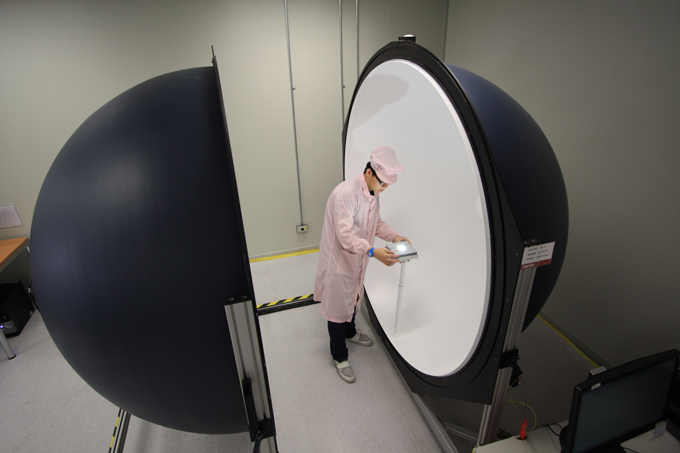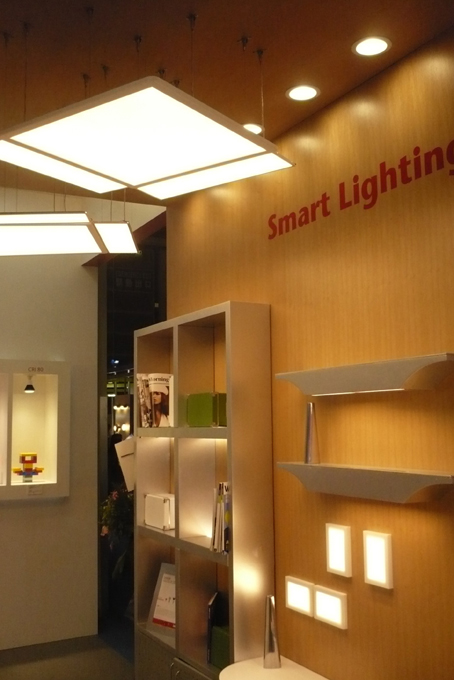Lextar Sharpens Edge with Integrated Manufacturing Capability
LED lighting maker aims to be a world leader in its field
2013/05/30 | By Ken LiuLextar Electronics Co., Ltd. recently unveiled an in-house laboratory that has been certified by the Illuminating Engineering Society of North America to LM79 and LM80 standards for the testing of solid state lighting (SSL).

The new lab is the first of its kind in Taiwan and another landmark in the company’s effort to strengthen its capabilities in the manufacturing of light emitting diode (LED) lighting products. Earlier landmarks include the establishment of epi-wafer, chip-making, packaging, and light-module and lighting-fixture production.
Lexar Electronics, a subsidiary of the liquid-crystal display (LCD) panel maker AU Optronics Corp. (AUO), is reportedly the only company in Taiwan and China with integrated LED lighting manufacturing capability.
Since its inauguration in May 2008, the company has been steered by chairman David Su in the direction of establishing an all-around LED manufacturing strength. “The advantage of an integrated-manufacturing capability is the ability to provide customers with time-efficient manufacturing services and to meet their customization needs,” the chairman stresses.
Su, who holds a Ph.D. in materials-science engineering from Stony Brook University in New York State, believes that vertical integration is the way for LED makers to achieve leading-edge performance. “Especially when all of the supply chains in the LED industry have commercialized their products,” he explains, “integration is the most efficient model for combining the technologies of all supply chains. It is thanks to integration that Lextar is more efficient than most of its competitors and has been able to grab a slice of the market in a short time.”
Integration has paid off in terms of Lextar’s share price, which hit a record high of NT$34.15 in March this year after the company went public in September 2011. Su compares his company with Cree of the United States, also an integrated LED manufacturer, which saw its share price soar 14% on March 11 on the news that it was entering the American domestic lighting market.
Lextar plans to further enhance its integration model this year by buying into the lighting mechanical, design, and distribution businesses.
To make the most of AUO’s huge demand for LED backlights, Lextar has established a cost-efficiency model and applied it to lighting manufacturing. “With our backlight production already at a mass scale,” Su notes, “our lighting manufacturing can be made more cost efficient by sharing our production capacity, brainpower, components, and other resources with backlight manufacturing.”
Su believes that his company’s integration model will be difficult for other companies in Taiwan to duplicate “because most of the local LED heavyweights, like Epistar Corp. and Everlight Electronics Co., are independently listed manufacturers, so they have to consider not just sales performance but also shareholder interest. Compared with them, we don’t have such a burden.” While other companies are specialized in certain areas—Epistar in epi-wafer making, Everlight in packaging, and Delta Electronics in module making--Lextar combines all of these specializations.
Nevertheless, Lextar was not without its baggage. When it was first set up the company was labeled as an LED maker exclusively for AUO, scaring away AUO’s competitors as potential customers.
Su contends that it is not proper to see his company as a dedicated LED maker for AUO. “Actually, you can say that Lextar was AUO’s dedicated LED maker for only about six months after establishment because we shortly acquired non-AUO customers by taking over LightHouse Technology Co.,” he says. LightHouse is a producer of surface mount device (SMD) GaN-based LED packages.
Lextar’s shipments to AUO have been scaled down to just shy of 60% of its total, and Innolux Corp., LG Display Co., Samsung, and several mainland Chinese display-panel makers have been added to its customer list.
Being a contract supplier to these big names has given Lextar the opportunity to design its own operating model that takes consideration of customers throughout its production flow process, product development, marketing, and product positioning. Also, by partnering with heavyweight customers the company has convinced the world’s top five LED-patent holders to enter into alliances with it in OEM and ODM manufacturing, and to license their patents to it.
These partnerships have enabled Lextar to swiftly enter into the LED lighting industry, and lighting now accounts for around 40% of its total revenue. Multinational lighting brands, including Philips and Osram, have become Lextar customers, and it also pushed into the Japanese lighting market after the Mar. 11, 2011 earthquake and ensuing tsunami.
Even as it has been teaming up with international patent holders, Lextar has vigorously invested in developing its own patented technologies and cultivating its own talents. According to the Intellectual Property Office under the Ministry of Economic Affairs, the company submitted 173 patent applications in Taiwan in 2011 (115 of them for invention patents), soaring 391% over 2010 and topping all of its domestic industry peers. Su notes that in that year the company’s 160-some R&D engineers came up with more than one patent application each.

Worldwide, the company submitted nearly 500 patent applications in 2011, up about 458% from the previous year.
Su stresses that technology and product innovation R&D is among the company’s core competences, and that only through continued investment can the company keep up its technological lead.
He is optimistic about the future of LED lighting, explaining that fluctuations in the lighting market are much more moderate than those in the display panel market. “That means the LED lighting market is much steadier and promises more business for a longer time,” he comments. He estimates that backlight and lighting sales combined will boost the company’s revenue by 60-80% this year.

